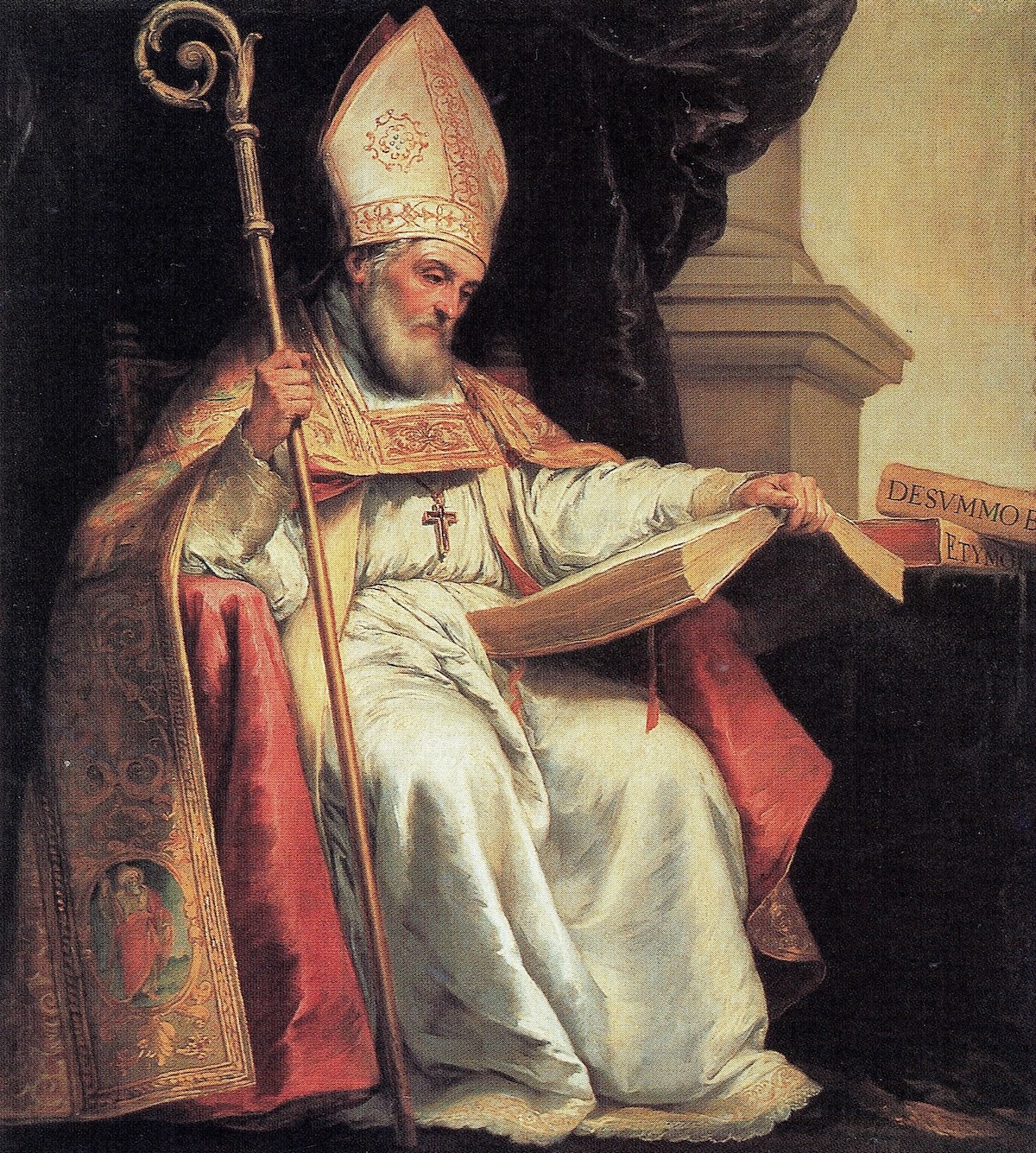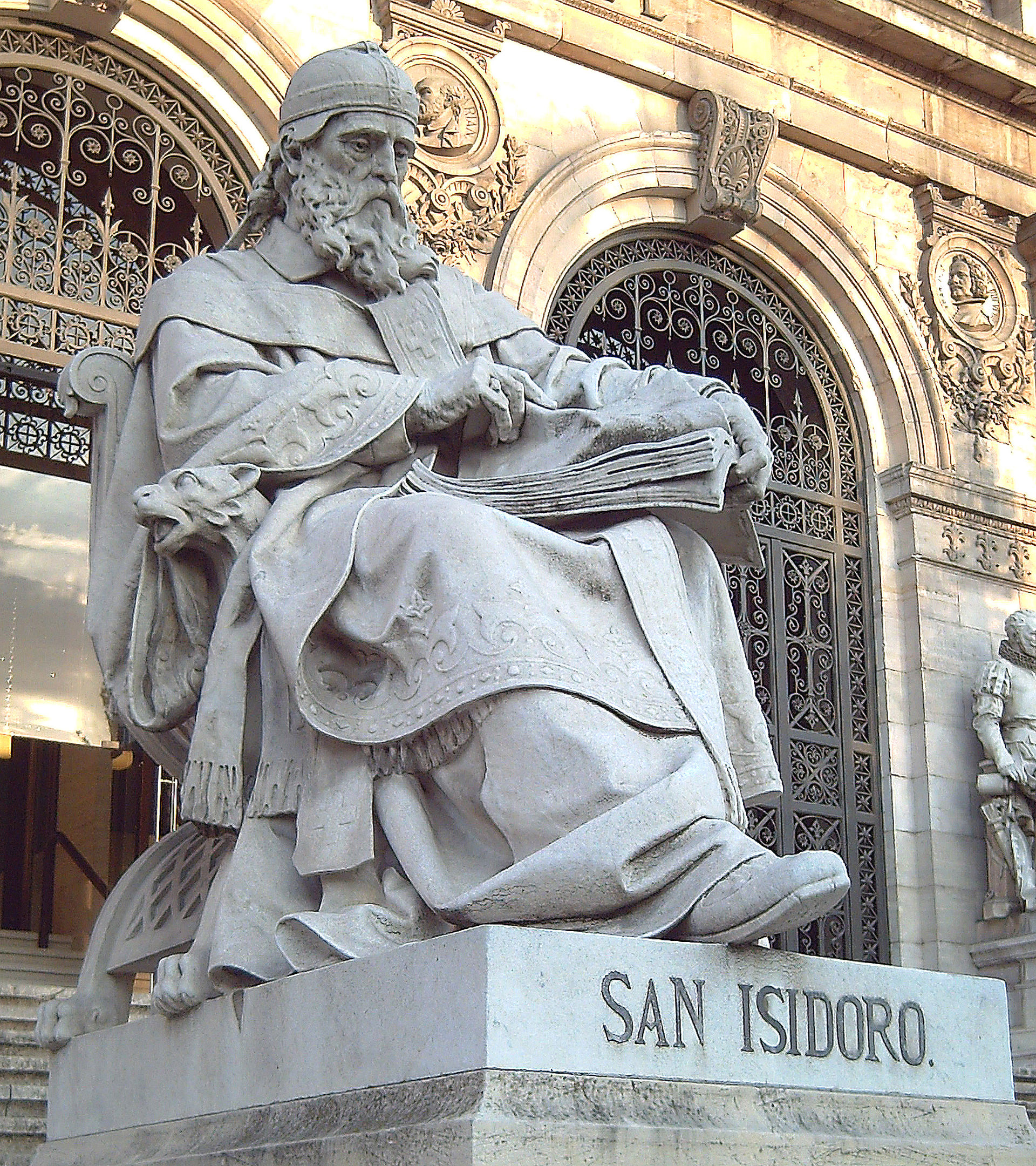
Catholic Saints
Saint Isidore of Seville (c. 560–636 AD), Archbishop of Seville from around 600 until his death, emerged as a towering intellect of the early medieval Church, earning a lasting legacy as the “Schoolmaster of the Middle Ages” for his monumental contributions to knowledge and faith in Visigothic Spain. Born into a prominent Hispano-Roman family, he navigated a tumultuous era of political upheaval as the Visigoths consolidated power, succeeding his brother Leander to lead the Church in a region transitioning from Roman to barbarian rule. A Doctor of the Church, Isidore is best known for his Etymologiae, a 20-volume encyclopedia that preserved classical learning and bridged antiquity with the medieval world, influencing scholars for centuries. He also played a key role in converting the Arian Visigoths to Catholicism at the Third Council of Toledo in 589 AD and authored works like the *Chronicle* andOn the Nature of Things, blending theology with natural science. His feast day is celebrated on April 4, and he was named a Doctor of the Church in 1722 by Pope Innocent XIII, revered for his erudition and pastoral diligence that illuminated a darkening age.
His feast day is celebrated on April 4.
Doctor of the Church
Born around 560 AD in Cartagena, Saint Isidore of Seville became Archbishop of Seville circa 600 AD, wielding scholarship and faith to preserve knowledge and unify the Church in a fractured Visigothic Spain.
Isidore was born around 560 AD in Cartagena, Spain, into a distinguished Hispano-Roman family that produced multiple saints, including his brothers Leander, Fulgentius, and sister Florentina. Orphaned young amid Visigothic conquests, he was raised by Leander, then Bishop of Seville, who ensured his education in Latin, Greek, and Hebrew—an uncommon breadth for the era. This grounding prepared him for a life bridging Roman and barbarian cultures.
Living in a time when Spain transitioned from Roman rule to Visigothic dominance, Isidore witnessed the erosion of classical institutions. His early years under Leander’s tutelage instilled a passion for learning and faith, shaping him into a scholar who would later harness this heritage to enlighten a new age, even as political turmoil swirled around him.
Around 600 AD, Isidore succeeded Leander as Archbishop of Seville, a pivotal role in Visigothic Spain’s religious and political landscape. His appointment followed decades of service as a priest and scholar, during which he supported Leander’s efforts to unify the Church. As archbishop, he presided over a diocese spanning much of southern Spain, navigating tensions between Catholic Hispano-Romans and Arian Visigoths.
Isidore’s leadership was marked by pastoral care and administrative vigor. He organized synods, such as the Fourth Council of Toledo in 633 AD, to standardize liturgy and discipline, and worked tirelessly to educate the clergy, founding schools that preserved classical texts and Christian doctrine—a testament to his vision of a learned Church amid a shifting world.
Isidore played a crucial role in the Third Council of Toledo in 589 AD, convened under King Reccared, where the Visigoths officially abandoned Arianism for Catholicism. Building on Leander’s groundwork, Isidore’s theological arguments and diplomatic finesse helped secure this conversion, uniting Spain under one faith and ending decades of religious division.
His efforts extended beyond the council, as he preached and wrote to solidify Catholic identity among the Visigoths. This triumph strengthened the Church’s alliance with the monarchy, fostering a cultural synthesis that blended Roman traditions with Germanic rule, a legacy that endured as Spain emerged as a Christian kingdom.
Isidore’s magnum opus, the Etymologiae (or *Origines*), a 20-volume encyclopedia completed late in life, stands as his crowning achievement. Drawing from classical authors like Pliny and Augustine, it cataloged knowledge on grammar, astronomy, medicine, and theology, aiming to explain the origins of words and concepts—a pioneering work that preserved Roman learning for medieval Europe.
Beyond the Etymologiae, his *Chronicle* traced history from creation to 615 AD, whileOn the Nature of Things explored cosmology and natural phenomena, blending science with faith. These works, copied widely after his death, made Isidore the “Schoolmaster of the Middle Ages,” a bridge between antiquity’s wisdom and the emerging Christian West.
Isidore’s lesser-known writings, like De Ecclesiasticis Officiis and Sententiae, addressed Church rites and moral theology, offering practical guidance for clergy and laity. His History of the Goths, Vandals, and Suevi documented Spain’s barbarian past, reflecting his interest in historical continuity. These works reveal a polymath whose scholarship served pastoral ends.
His emphasis on education extended to his episcopal duties, as he established seminaries and libraries in Seville, ensuring the clergy were literate and orthodox. Named a Doctor of the Church in 1722 by Pope Innocent XIII, Isidore’s intellectual legacy illuminated an era often mischaracterized as dark, earning him modern recognition as a patron of scholars and technology.
Isidore died on April 4, 636 AD, in Seville, after a 36-year episcopate, and was buried in his cathedral. His feast day, April 4, honors a life of tireless service. His tomb, later moved during Moorish invasions, became a site of veneration, symbolizing his enduring presence in Spanish Christianity.
Saint Isidore of Seville’s legacy lies in his preservation of knowledge and unification of faith. His Etymologiae influenced medieval thinkers like Alcuin and Aquinas, while his councils shaped Spain’s Church. Revered as a scholar-saint, his life bridged a fractured past with a hopeful future, a beacon of learning and devotion for generations.
“Study as if you were to live forever; live as if you were to die tomorrow.”
Born in Cartagena.
Raised by brother Leander.
Aided Visigoth conversion.
Third Council of Toledo.
Became Archbishop.
Led Seville’s Church.
Completed encyclopedia.
Finished Etymologiae.
Died in Seville.
Named Doctor of the Church in 1722.

“Study as if you were to live forever; live as if you were to die tomorrow.”
Saint Isidore of Seville Quotes
“The more you devote yourself to study, the more you will find your mind enriched with knowledge.”
“Prayer purifies us, reading instructs us. Both are good when they are possible.”
“The Earth is the mother of all things, from which all things proceed and to which they return.”
“Heresy is a Greek word meaning choice, because each heretic chooses what seems good to him.”
“The office of a bishop is to teach, to govern, and to sanctify the people entrusted to him.”
“All things have a beginning and an end, and nothing remains unchanged forever.”